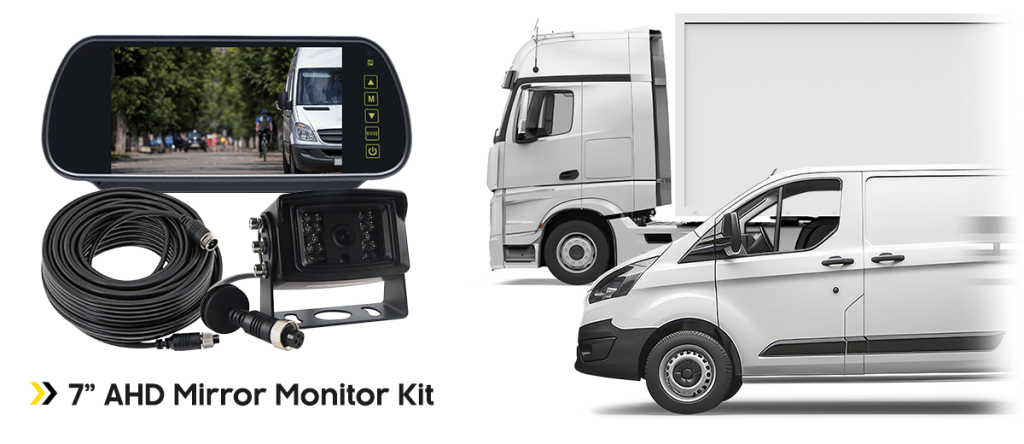Top 6 Mistakes Fleet Operators Make with Vehicle Cameras

Fleet operators are under increasing pressure to improve safety, reduce risk, and demonstrate accountability. Not just to insurers and regulators, but to customers and the public too. As a result, vehicle cameras have quickly shifted from a nice-to-have to a business-critical tool.
But while installing cameras is a step in the right direction, it’s far from the whole picture.
Without the right approach, even the most advanced CCTV systems can end up underused. Based on what we see across the industry, here are 6 of the most common mistakes fleet operators make with vehicle CCTV — and how you can avoid them.
1. Choosing Tech That Doesn’t Fit Your Team
You can have the most advanced system on the market (AI-powered, driver alerts, blind spot detection) but if it doesn’t work for your drivers, it won’t work at all.
A study by AXA and Brake The Road Safety Charity found that 41% of drivers admitted to switching off in-vehicle safety systems because they found them distracting or annoying.
The Solution? Involve drivers in the selection process. Run trials. Choose intuitive, unobtrusive systems that add value without causing frustration. If drivers don’t trust or understand the tech, they’ll ignore or disable it and that’s a risk that you can’t afford.
2. Installing A Camera System, Then Forgetting to Utilise It
It’s common to see fleets install cameras and assume that’s the job done. But without regular checks, updates, and training, these systems fall into disrepair or lose relevance as your fleet evolves.
The Solution? Treat CCTV like any other safety-critical equipment. Build routine checks into your maintenance schedules. Make sure footage is reviewed, storage is adequate, and firmware stays updated.
3. Failing to Train Drivers on What the Cameras Are For
Drivers may feel monitored, mistrusted, or even targeted if cameras are introduced with no explanation. This can lead to poor engagement or even resistance.
The Solution? Make CCTV part of a safety partnership, not a surveillance tool. Train drivers on how it protects them, clears them in no-fault incidents, and helps improve road safety. The message you need to convey is “we’re here to support, not spy”.
4. Waiting Until “Something Happens” to Review Camera Footage
Many fleets only review footage after an incident. Missing countless opportunities to prevent them in the first place. By then, it’s already cost you.
Vehicle CCTV isn’t just for proving fault after a crash. It’s a goldmine of behavioural data. Near-misses, harsh braking, mobile use, driver distraction, and much more. All of this is extremely valuable in protecting your drivers, vehicles, and other road users.
The Solution? Implement intelligent fleet management and AI-powered camera software. These smart systems can flag risky behaviour automatically. Use this data proactively for early intervention and targeted driver coaching. That’s where the real ROI lives.
5. Not Using Cameras to Defend Claims Fast Enough
CCTV footage can be your best defence in the event of a collision or false claim, but only if you can access it quickly. Waiting days to retrieve footage (or discovering it’s been overwritten) can lead to lost cases and higher premiums.
The Solution? Use cloud-connected systems that allow instant access to footage, ideally with automatic footage analysis and FNOL alerts. Train your team to retrieve and escalate relevant clips without delay.
6. Forgetting About the Importance of Data Security
CCTV footage contains the sensitive personal data of drivers, passengers, and members of the public. A data breach or unsecured storage can have serious legal and reputational consequences.
The Solution? Ensure your provider offers end-to-end encryption, secure cloud storage, and access controls. Audit your internal policies to ensure only authorised personnel can view or share footage.
Want to Avoid These Pitfalls?
Avoiding these mistakes means turning your CCTV system from a passive recorder into an active, integrated part of your company’s risk strategy. It’s not just about having cameras; it’s about using them smartly.
If you’re unsure whether your current setup is fit for purpose, it might be time for a review.
CKO have over 40 years of experience providing camera systems and software solutions to fleets across the UK. To find the ideal solution for your needs, give our team a call on 0208 863 8333 or visit our monitor and camera kits page on our website here.
